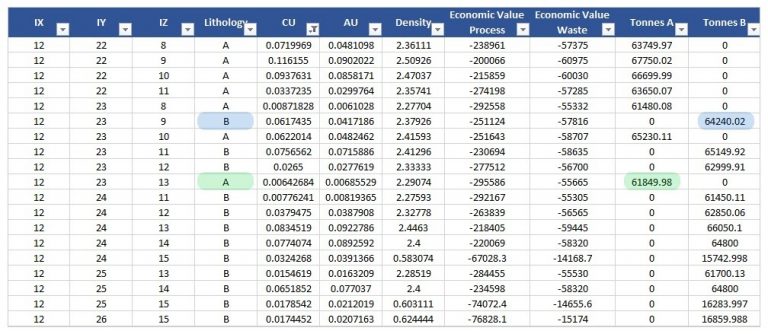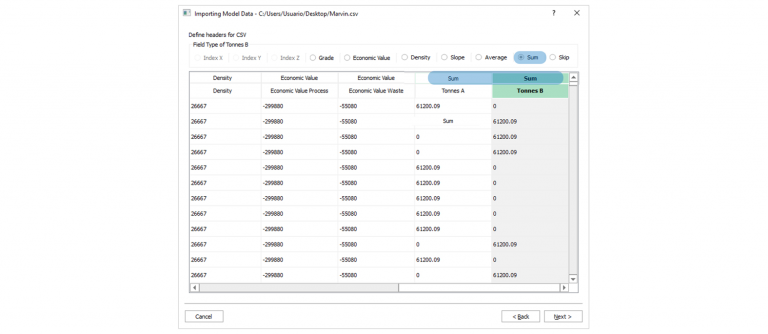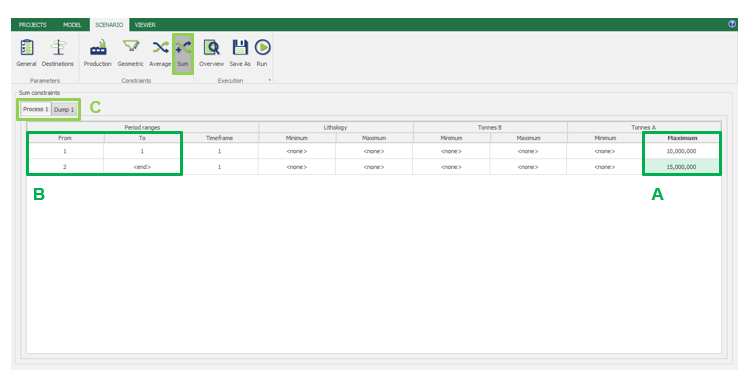Sum
Highlights
Sum constraints let you control total values like tonnage or metal content directly in your model, helping align plans with production targets.
- Integrates total limits without extra steps, thanks to MiningMath’s simultaneous optimization.
- Helps avoid rework by adjusting scenarios automatically to meet quantity goals.
What is a Sum constraint?
Sum constraints are based on the sum of any quantifiable parameter modeled block by block. To use this feature on MiningMath, the dataset must contain an auxiliary field/column which considers a value of what you wish to limit regarding the value of it in each block. Therefore, this feature controls the total amount of the variable that has been modeled based on blocks that were mined in that single period. Basically, any variable which could be modeled considering these assumptions could be controlled.

Video 1: Blending and other constraints.
Some examples are listed below:
Tonnages and proportions of rock type and metal production.
Consumption of inputs such as energy spent during comminution, and fleet hours spent to mobilize material.
Contaminants control on the processing plant during each period.
Blasting material consumptions.
The user can define:
Different sum limits for each material.
Different sum limits for each intervals.
Different sum limits for each destinations.
Combine all the options above in order to achieve globally optimized results.
Create auxiliary fields in the block model, quantifying the information to be controlled (Figure 1).
During importation, assign these auxiliary columns to Sum (Figure 2).
On the Sum tab, input minimum and maximum limits for each variable, period range and destination (Figure 3).





